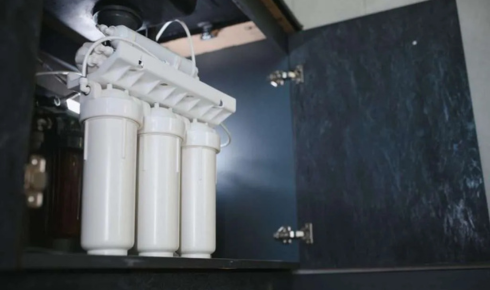It’s funny how something as ordinary as water — the most basic thing we drink — can be so misunderstood. We’re told to stay hydrated, to drink eight glasses a day, to carry that massive bottle around like it’s a trophy of good health. Yet somehow, despite all that water, many of us still feel tired, foggy, or even dehydrated.
So what gives? The truth is, hydration isn’t just about how much water you drink — it’s about how well your body uses it. And, believe it or not, the missing ingredient might be something as simple as salt.
The Real Role of Salt in Hydration
If you’ve ever wondered why does salt help with hydration, the answer lies in biology. Your body doesn’t just absorb water and call it a day; it relies on electrolytes — minerals like sodium, potassium, and magnesium — to move that water into your cells and keep everything balanced.
Salt, specifically sodium chloride, plays a starring role here. It helps regulate the movement of fluids between cells, ensures your nerves can communicate properly, and prevents you from flushing out vital minerals when you drink large amounts of water. Without enough sodium, your body can actually lose water faster — which is why you might still feel parched even after drinking plenty.
Athletes have known this for years. That’s why sports drinks are loaded with electrolytes (and unfortunately, a lot of sugar). But for everyday hydration, a simpler, more natural solution works just as well — a tiny bit of salt.
Our Modern Water Problem
The water you drink today isn’t the same as what our ancestors consumed. Back then, people drank from mineral-rich springs and wells. Their water naturally contained trace elements like calcium and magnesium that supported hydration.
Now, most of us rely on heavily filtered or bottled water — clean, yes, but stripped of those same minerals. That’s why many people unknowingly end up drinking “empty” water. It hydrates superficially, but not deeply.
So when someone says to try sea salt with water, they’re not suggesting you gulp down something that tastes like the ocean. They mean adding a pinch of unrefined, mineral-rich salt to restore what’s been lost in modern processing. Sea salt, Himalayan salt, or Celtic salt all contain trace minerals that plain tap or filtered water often lacks. It’s a subtle but powerful upgrade that helps your body hold onto hydration instead of losing it too quickly.
The Right Way to Do It
This isn’t about making salty lemonade or forcing yourself to drink something unpleasant. The right balance matters. Too much salt can dehydrate you further, while the right amount can make all the difference.
Start small — we’re talking about adding a pinch of salt to water, maybe 1/8 teaspoon per liter. You shouldn’t taste much of a difference, but your body will notice. Some people also like to add a squeeze of lemon or a drop of honey to make it more refreshing.
If you’re active, live in a hot climate, or consume a lot of caffeine (which can deplete hydration), this small ritual can be a game-changer. Think of it as nature’s own electrolyte drink — simple, cheap, and surprisingly effective.
The Subtle Signs You’re Dehydrated
You might think dehydration looks like cracked lips and dizziness, but often, it’s far sneakier than that. Brain fog, fatigue, muscle cramps, and even sugar cravings can all stem from dehydration. Sometimes you’re not lacking food or caffeine — you’re just missing proper hydration.
That’s because when your electrolytes are off balance, your cells can’t retain the water you drink. You’re essentially pouring liquid into a leaky bucket. Sodium, found in salt, helps patch up those leaks by stabilizing fluid levels inside and outside your cells.
It’s also worth noting that dehydration isn’t just about water loss through sweat. Stress, heat, alcohol, and processed foods can all throw off your electrolyte balance. The body’s hydration system is delicate — and that’s why a tiny pinch of mineral salt can make such a difference.
Breaking the Myths About Salt
Salt has gotten a bad rap over the years. For decades, we’ve been told to fear it — to avoid sodium like it’s a villain hiding in our food. But that’s only half the story. The real issue isn’t natural salt; it’s the refined kind that’s added to processed snacks, canned soups, and fast food.
Unrefined salts like sea salt or pink Himalayan salt contain a more balanced mix of minerals and lack the chemical additives found in table salt. In moderation, these natural salts can actually support health, not harm it.
Of course, moderation is key. If you already consume too much processed food, you’re likely getting enough sodium (just not the good kind). But if you eat clean, drink filtered water, and avoid packaged foods, you may actually need a little extra salt to balance your hydration levels.
The Everyday Benefits People Notice
It’s amazing how something this small can make such a big difference. People who start adding a pinch of mineral salt to their water often report feeling more alert, less fatigued, and more focused. Some even say their headaches and sugar cravings decrease.
Hydration affects everything — digestion, skin, mood, and energy. When your body’s hydrated properly, it doesn’t just feel better — it functions better. Your organs work more efficiently, your muscles recover faster, and your mind feels clearer.
You might even find yourself drinking less water overall — because your body’s using it more effectively.
Making It a Habit
The easiest way to build this into your routine is to start your morning with a glass of mineralized water. Before your coffee, before breakfast — just a simple glass of filtered water with a pinch of sea salt and maybe a squeeze of lemon.
It’s grounding, refreshing, and a small act of care that sets the tone for the rest of your day.
If you’re skeptical, try it for a week. Pay attention to how your body feels — your energy, focus, and even your skin. You might be surprised at how such a tiny change brings noticeable results.
A Simple Return to Balance
We often overcomplicate wellness. We chase the latest supplements, powders, and “hacks” while overlooking the simplest truths our ancestors already knew: water and minerals are life.
Salt isn’t the enemy of hydration — it’s part of it. In fact, when used thoughtfully, it bridges the gap between drinking and absorbing water.
So next time you fill your bottle, remember — hydration isn’t just about quantity, it’s about quality. Water works best when it’s paired with the minerals your body craves.
Sometimes, the secret to feeling your best is right there in your kitchen cabinet — small, simple, and beautifully overlooked.

